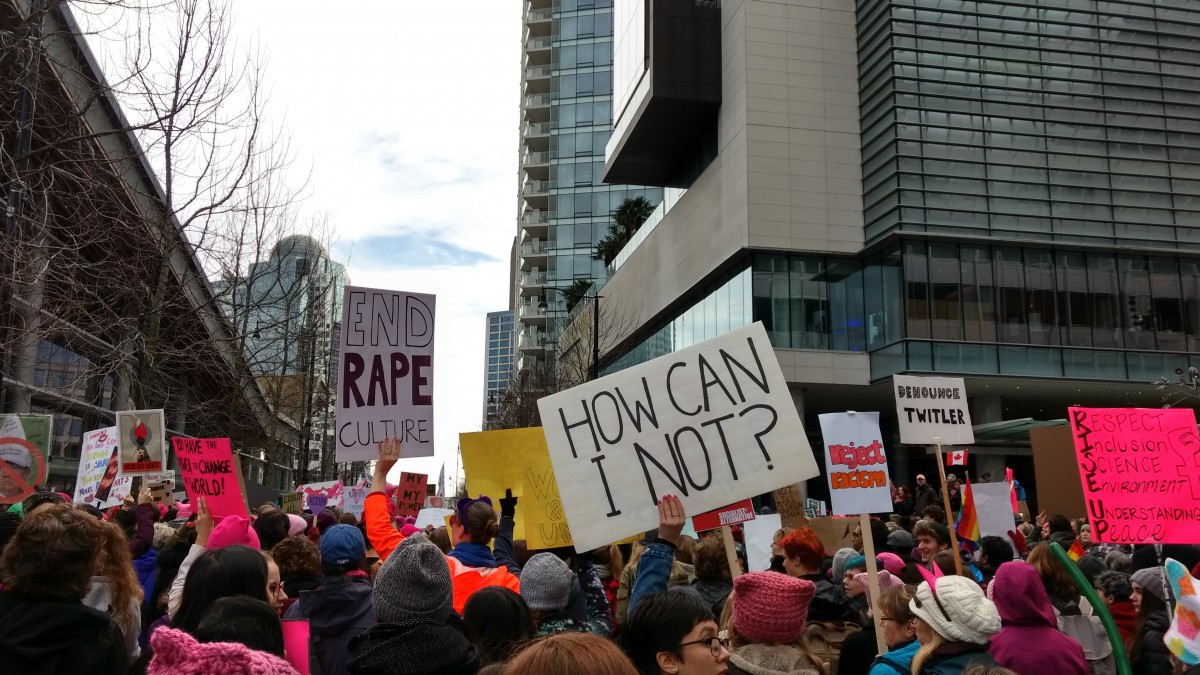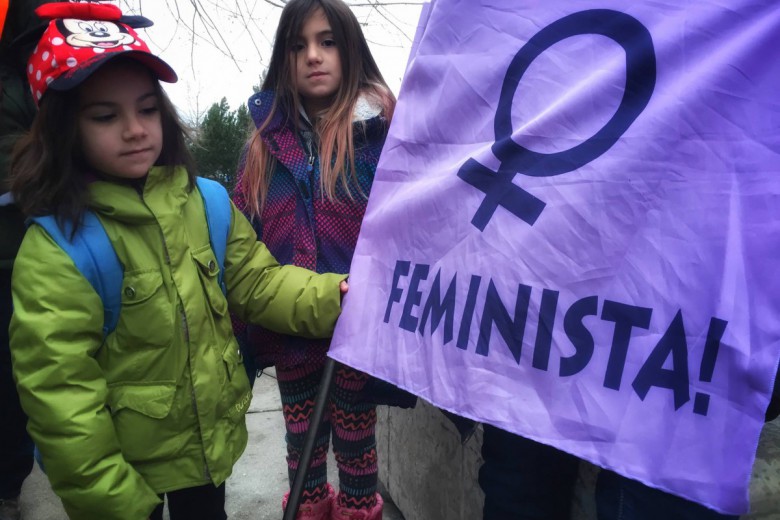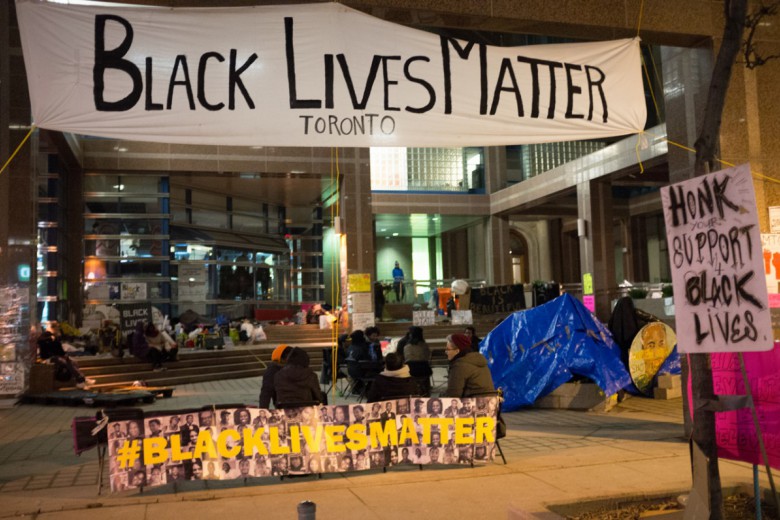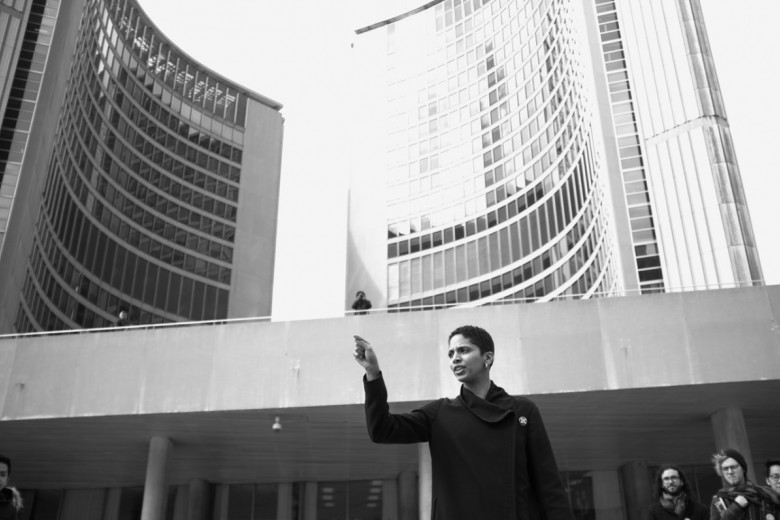I stayed up until 3:30 in the morning this past Friday to knit a pink pussy hat for the Women’s March on Washington’s sister march in Vancouver the following day. The march was fun (I’m pretty sure it’s impossible not to have fun while wearing a ridiculous pink hat), but it also left me with some questions, particularly related to what this march meant here, in this particular place.
According to the event’s website, more than 4.8 million people worldwide registered to march on Saturday. The main march in Washington had over half a million attendees: three times larger than President Trump’s inauguration crowd. This march was intended to “send a bold message to [the United States’] new government on their first day in office, and to the world that women’s rights are human rights.”
In Vancouver, more than 15,000 people gathered for this event. The day began with speeches from local community leaders like Musqueam band member Rhiannon Bennett, Mexican-Canadian human rights activist Nancy Trigueros, and Vancouver city councillor Heather Deal. Attendees then began marching through downtown, passing by Trump tower near the end of the route.
The mood at the march was joyous. Everyone seemed to be buzzing with excitement, eager to read each other’s clever sign slogans and take selfies with their pussy hats. More of my own friends attended this march than any other march or protest I’ve been to in the city. Other friends of mine in various American cities sent similar sentiments, all moved by a movement of people calling for equality and the protection of women’s rights.
So my first question is: is this really a movement? Maeve Reston at CNN wonders if the marches are “simply a cathartic moment for people upset over Trump’s election victory or a more enduring opposition movement.” Micah White, via The Guardian, similarly (though more bluntly) states: “Without a clear path from march to power, the protest is destined to be an ineffective feelgood spectacle adorned with pink pussy hats.”
And by many accounts, it was a “feel-good spectacle.” Here in Vancouver, I saw countless pink hats, but my friends and I left the march without being given any next steps for action. The focus seemed to be on people coming together that day to celebrate the strength of women, without necessarily asking attendees to commit to sustained future action. In some ways, this is fine; I firmly believe it’s important to make space to celebrate, even and especially when celebrating seems difficult. Since Trump’s election, many people have been, at best, emotionally drained and, at worst, afraid for their lives. These marches provided a space for women and their allies to come together and show their bold, unapologetic strength.
On the other hand, we absolutely need to consider what comes next. In Vancouver, this question is especially important considering some major organizational missteps that saw march organizers fail to involve Black Lives Matter – Vancouver (BLM-V). On Saturday, BLM-V released a statement that read, “The Vancouver organizers did not contact, consult, or include Black Lives Matter Vancouver despite the fact that the misogyny and bleak realities of the Trump administration will disproportionately harm Black people and people of colour, particularly those who are trans and queer.”
As Holly Bishu and Daniella Barreto from BLM-V explained to me, BLM-V is crucial to women’s rights work here. “It is important for BLM-V to be part of the Women’s March,” they told me, “…because BLM-V represents women within the margins. Black women, trans women, and femmes experienced gender-based violence as well as race-based violence. A feminism that caters only to white bodies and does not highlight and center black and brown bodies will never be inclusive of all women.”
The main march in Washington similarly failed at first to be inclusive, but the organizers there made changes to their leadership and expanded their focus to include struggles of racialized women, sex workers, queer and trans women, and working class women. In response to BLM-V’s statement, the parent group of the Women’s March on Washington-Canada apologized to BLM-V on Sunday via Twitter for excluding them. BLM-V says they have not yet received a response from the local march organizers.
This brings me to my second question. Here in Vancouver, what – and who – were we marching for? While I saw many signs focusing on reproductive rights and female empowerment in general, I saw very few related to racial justice, or, indeed, to any particularly localized issues. Even if most people who came to the march did so to show solidarity with American women, and not necessarily to think about our own issues at home, isn’t that revealing in and of itself? While it’s understandable that Trump’s election is a major global event and therefore easily catalyzed action, I don’t think anywhere close to 15,000 people have come out to local rallies for BLM-V, or to pressure the province to adopt a comprehensive poverty reduction plan, or to call attention to missing and murdered Indigenous women and girls. What conversation was there around the provincial government’s grim inaction on issues such as accessible childcare, women in prisons, and women’s access to justice?
We in Vancouver, and in Canada more broadly, have much work left to do when it comes to women’s rights and human rights. A danger of the Trump phenomenon has been that we as Canadians will decry the United States while failing to see or act on the inequalities we have here at home. As BLM-V’s statement about the march says, “This march cannot be a one-time event where people in Vancouver congratulate themselves for minimal activism about the United States and return to watching and participating in systemic racism and oppression in Canada.”
Now that the marches are over, I’m eager to be part of what comes next, and I’m hopeful that many of the march attendees feel the same. The main march organizers have promised there’s more to come: “This is more than a single day of action, this is the beginning of a movement – to protect, defend and advance human rights, even in the face of adversity.” They’ve also introduced a plan for 10 actions over the next 100 days.
Here in Vancouver, I’ll take direction from BLM-V’s Holly and Daniella who told me we should listen to diverse voices, search out resources on these issues, diversify the media we consume, and show up to events. The next major Vancouver event is likely the annual Women’s Memorial March on February 14, 2017, which calls attention to missing and murdered women in the Downtown Eastside. The marches this past weekend can turn into a movement, but only if we all commit to continue marching, in so many different ways, every day.







